Rispondi al commento
Untitled
Colleen Gleason: VAMPIRE HUNTERS WITH CORSET
Colleen Gleason: CACCIATRICI DI VAMPIRI IN CORSETTO
 I've always been a fan of historical romances, including Jane Austen's wonderful Pride and Prejudice, but at the same time I found myself intrigued by contemporary characters like Buffy the Vampire Slayer and Sydney Bristow of Alias.
I've always been a fan of historical romances, including Jane Austen's wonderful Pride and Prejudice, but at the same time I found myself intrigued by contemporary characters like Buffy the Vampire Slayer and Sydney Bristow of Alias.
Buffy and Sydney had it hard enough balancing their double lives in 20th-century America, but what would it have been like for them if they'd lived a century earlier - during a time when a woman was always chaperoned, could never go out alone at night, and whose main goal in life was to get married?
That was how I got the idea for The Gardella Vampire Chronicles. It's a series about Victoria Gardella Grantworth, who, just before she is about to debut into 19th-century London Society, learns that she comes from a long line of vampire hunters.
Not only does she have to find a place to hide her stake, but she's got to figure out how to get out at night to stalk vampires in between pouring tea and filling her dance card - not to mention handle the inquisitive Marquess of Rockley, who's asking too many questions, stave off the mysterious Sebastian Vioget and determine whether he's friend or foe - and work with the arrogant Max Pesaro, who thinks women have no business being vampire hunters.
Colleen Gleason
Sono sempre stata una fan dei romanzi d'amore storici, inclusi lo stupendo Orgoglio e Pregiudizio di Jane Austen, ma allo stesso tempo mi sono ritrovata intrigata dai personaggi contemporanei come Buffy La Cacciatrice di Vampiri e la Sydney Bristow di Alias.
Buffy e Sydney hanno il loro d'affare a bilanciare le loro doppie vite nell'America del ventesimo secolo, ma come sarebbe stato per loro se fossero vissute un secolo prima - in un periodo in cui una donna era sempre accompagnata, non poteva mai uscire da sola la notte, e il cui scopo principale nella vita era sposarsi?
Così è come mi è venuta l'idea per la serie The Gardella Vampire Chronicles. E' una serie su Victoria Gardella Grantworth, che, proprio prima del suo debutto nella società londinese del diciannovesimo secolo, apprende che discende da una lunga linea di cacciatori di vampiri.
Non solo deve trovare un posto per nascondere il suo pugnale, ma deve anche capire come uscire di notte per cacciare i vampiri tra versare il te e riempire il suo carnet di ballo - senza menzionare il fatto di trattare con l'inquisitiva Marchesa di Rockley, che sta facendo troppo domande, allontanare il misterioso Sebastian Vioget e capire se lui è un amico o un nemico - e lavorare con l'arrogante Max Pesaro, che pensa che le donne non hanno niente a che fare con i cacciatori di vampiri.
Colleen Gleason

About Collen Gleason: Born in Detroit, Colleen Gleason spent most of her adult life in Michigan. She attended the University of Michigan in Ann Arbor, receiving her BA in English, and later went on to obtain her MBA from the University of Michigan in Flint.
After more than fifteen years of sales, marketing, and management experience in the health care industry, Colleen began her own health insurance agency, which she owned and operated for several years. However, her passion has always been writing fiction, and in late 2005, she sold her first two books to New American Library, a division of The Penguin Group.
Her debut novel, The Rest Falls Away, the first in the Gardella Vampire Chronicles, was released to acclaim in early 2007. Publishers Weekly cited Colleen in a cover story about promising new romance novelists, and joined other media in giving The Rest Falls Away glowing reviews.
Colleen currently lives near Ann Arbor and writes full-time.
Nata a Detroit, Colleen Gleason ha passato la maggior parte della sua vita da adulta nel Michigan. Ha frequentato l'Università del Michigan ad Ann Arbor, ottenendo la sua laurea in Letteratura Inglese, e più tardi ha proseguito per ottenere il suo dottorato dall'Università del Michigan di Flint.
Dopo più di quindici anni di esperienza nel campo delle vendite, del marketing e della gestione d'impresa nel settore industriale della Salute, Colleen ha fondato la sua propria agenzie assicurativa, che ha posseduto e gestito per diversi anni. Tuttavia, la sua passione è sempre stato lo scrivere, e alla fine del 2005, ha venduto i suoi primi due libri alla New American Library, una divisione della Penguin Group.
Il suo romanzo d'esordio, The Rest Falls Away (Cacciatori di Vampiri), il primo nella serie Gardella Vampire Chronicles, è stato pubblicato con successo all'inizio del 2007. Il Publishers Weekly ha citato Colleen in un suo articolo sulle nuove promesse del romance, e si è unito ad altri mezzi di comunicazione nel dare entusiastiche recensioni a The Rest Falls Away (Cacciatori di Vampiri)
Colleen attualmente vive vicino ad Ann Arbor e scrive a tempo pieno.

The Gardella Legacy:
Venators: Ever since the first Gardella was called to fight vampires in First-Century Rome, members of the Gardella family have been chosen to take up the duty of ridding the world of the evil undead.
Those selected for this responsibility are warned through a series of five horrible dreams within a short time–dreams that demonstrate and portend their future of hunting vampires and battling evil. Many who are called don't know the meaning of the dreams until after the fifth one, when they are educated about the world of vampires and Venators by a mentor that is sent to them.
Once the dreams have occurred, and if the dreamer agrees to accept the Legacy, the chosen person must pass a test: to hunt and kill a vampire. One who is called to this duty bears the innate sense and skill to carry out this duty, although he or she may decide not to accept the calling.
If the chosen Gardella is successful in slaying a vampire, then he (or she) is given the vis bulla and becomes a full-fledged Venator, or vampire hunter.
The vis bulla is a holy strength amulet, a tiny silver cross forged from a small vein beneath the mountain of Golgatha and steeped in holy water. It provides protection, strength, speed, and fast-healing capability for the Venator.
There are no more than two hundred Venators world wide at any given time; they fall in far-flung branches of the Gardella family throughout all corners of the earth–often unaware of the family legacy until the five dreams, and the subsequent visit by the mentor.
These randomly-appearing members of the Gardella family tree are known as born Venators, for they were born to their duty and chosen for the Legacy.
Sin da quando il primo Gardella fu chiamato a combattere i vampiri nel primo secolo a Roma, i componenti della famiglia Gardella sono stati scelti per assumere il compito di liberare il mondo dei malvagi non morti.
Quelli scelti per questo compito sono messi in guardia attraverso una serie di cinque orribili sogni fatti in un breve spazio di tempo - sogni che dimostrano e proiettano il loro futuro di cacciatori di vampiri e combattenti del male. Molti di quelli che sono chiamati non sanno il significato dei sogni fin dopo il quinto, quando vengono istruiti sul mondo dei vampiri e dei Venators da un mentore che viene mandato a loro.
Una volta che i sogni sono stati fatti, e se il sognatore acconsente ad accettare la sua Eredità, la persona scelta deve superare una prova: cacciare ed uccidere un vampiro. Uno che è chiamato a questo compito possiede l'innato senso e la capacità di portare avanti questo compito, sebbene lui o lei possano decidere di non accettare la chiamata.
Se il prescelto Gardella ha successo nel cacciare un vampiro, poi a lui (o lei) viene consegnato la vis bulla e diventa un Venator completo, o cacciatore di vampiri.
La vis bulla è un amuleto che da una forza divina, una piccola croce d'argento forgiata da una piccola vena al di sotto della montagna del Golgota e forgiata nell'acqua santa. Fornisce protezione, forza, velocità e capacità di guarigione immediata per il Venator.
Ci sono non più di duecento Venators in tutto il mondo ed in tutte le epoche; sono presenti in molti rami lontani della famiglia Gardella in tutti gli angoli della terra - spesso inconsapevoli dell'eredità di famiglia fino ai cinque sogni, e alla seguente visita del mentore.
Questi componenti sparsi dell'albero genealogico della famiglia Gardella sono conosciuti come Venators nati, dato che sono nati per il loro compito e scelti per l'Eredità.

Vampires: The first vampire was Judas Iscariot, who was seduced by Lucifer to join him after he sold Jesus Christ. Believing that he would never be forgiven, Judas hanged himself, and Lucifer used him to create a new race of creatures: half-man and half-demon, who would survive by drinking the blood of mortal man.
Lilith the Dark is the daughter of Judas, and has been alive for more than a millenium. She is the most powerful vampire on the earth today, and rules over the members of her race.
All vampires have red eyes and fangs, and will burn if subjected to direct sunlight. A stake to the heart will destroy any vampire, as will a beheading. Because of the ties between Judas and Jesus Christ, vampires are afraid of silver (due to the thirty pieces Judas received in payment for selling Jesus) and other holy objects.
Guardian vampires are those in Lilith's elite guard, and their eyes glow ruby pink instead of bloodred. These vampires are have a particularly strong capability to enthrall their victims, and their fangs release a special poison at will.
Imperials are the most fearsome of all vampires. They usually have long hair and they nearly always carry swords. They can fly and glide through the air and have the ability to pull the life-force from a human without touching or biting them.
Il primo vampiro fu Giuda Escariota, che fu sedotto da Lucifero per unirsi a lui dopo che vendette Gesù Cristo. Credendo che non sarebbe mai stato perdonato, Giuda si impiccò, e Lucifero lo usò per creare una nuova razza di creature: mezzi uomini e mezzi demoni, che sarebbero sopravvissuti bevendo il sangue degli uomini mortali.
Lilith l'Oscura è la figlia di Giuda, ed è stata in vita per più di un millennio. E' la più potente dei vampiri sulla terra in questo momento, e comanda sugli altri componenti della sua razza.
Tutti i vampiri hanno occhi rossi e canini, e bruceranno se esposti alla luce diretta del sole. Un paletto infilzato nel cuore distruggerà qualsiasi vampiro, così come essere decapitato. A causa dei legami tra Giuda e Gesù Cristo, i vampiri sono spaventati dell'argento (a causa dei trenta denari che Giuda ha ricevuto in pagamento per aver venduto Gesù) e altri oggetti santi.
I vampiri guardiani sono quelli nella guardia scelta di Lilith, e i loro occhi brillano di rosa rubino invece che di rosso sangue. Questi vampiri hanno una capacità particolarmente forte di affascinare le loro vittime, e i loro canini rilasciano un veleno speciale a loro discrezione.
Gli Imperiali sono i più temuti di tutto i vampiri. Di solito hanno capelli lunghi e quasi sempre portano delle spade. Possono volare e scivolare nell'aria e hanno la capacità di ricavare la loro forza vitale da un umano senza toccarlo o morderlo.
The Books:
 1) The Rest Falls Away. Release Date: January 2, 2007. The first in the Gardella Vampire Chronicles...
1) The Rest Falls Away. Release Date: January 2, 2007. The first in the Gardella Vampire Chronicles...
Beneath the glitter of dazzling 19th-century London Society lurks a bloodthirsty evil...
Vampires have always lived among them, quietly attacking unsuspecting debutantes and dandified lords as well as hackney drivers and Bond Street milliners. If not for the vampire slayers of the Gardella family, these immortal creatures would have long taken over the world.
In every generation, a Gardella is called to accept the family legacy, and this time, Victoria Gardella Grantworth is chosen, on the eve of her debut, to carry the stake.
But as she moves between the crush of ballrooms and dangerous, moonlit streets, Victoria's heart is torn between London's most eligible bachelor, the Marquess of Rockley, and her enigmatic ally, Sebastian Vioget.
And when she comes face to face with the most powerful vampire in history, Victoria must ultimately make the choice between duty and love.
Il primo nella serie Gardella Vampire Chronicles...
Al di sotto dello scintillio dell'abbagliante Società londinese del diciannovesimo secolo giace una malvagità assetata di sangue...
I vampiri sono sempre vissuti tra di noi, pacatamente attaccando debuttanti insospettabili e lord azzimati così come vetturini a nolo e modiste di Bond Street. Se non fosse per i cacciatori di vampiri della famiglia Gardella, queste creature immortali avrebbe da lungo preso il possesso del mondo.
In ogni generazione, un Gardella è chiamato ad accettare l'eredità di famiglia, e questa volta, Victoria Gardella Grantworth è stata scelta, alla vigilia del suo debutto, per portare il paletto.
Ma mentre si muove tra la ressa delle sale da ballo e strade pericolose e illuminate dalla luna, il cuore di Victoria è diviso tra lo scapolo più ricercato di Londra, il Marchese di Rockley, e il suo enigmatico alleato, Sebastian Vioget.
E quando si trova faccia a faccia con il più potente vampiro nella storia, Victoria deve infine fare la scelta tra il dovere e l'amore.
 2) Rises the Night. Release Date: June 2, 2007. The second installment of the Gardella Vampire Chronicles is on shelves now!
2) Rises the Night. Release Date: June 2, 2007. The second installment of the Gardella Vampire Chronicles is on shelves now!
The glorious nineteenth-century city of Rome gives rise to a new threat from the Immortal Undead...
Victoria Gardella has been a vampire slayer for just over a year, balancing her life as a peer of Society with the dangerous role that takes her out on moonlit streets, stake in hand.
As Victoria races across Europe to stop what could be the most deadly army the Gardellas have ever faced, she is accompanied by the unlikely Sebastian Vioget, a man as tempting as he is untrustworthy. But when Victoria discovers that she has been betrayed by one of her most trusted allies, the truth will challenge all her powers as a Venator – and as a woman.
Il secondo capitolo nella serie Gardella Vampire Chronicles è in libreria adesso!
La gloriosa città di Roma del diciannovesimo secolo viene sottoposta ad una nuova minaccia dal Non Morto Immortale...
Victoria Gardella è una cacciatrice di vampiri da appena un anno, cercando di bilanciare la sua vita come una pari delle Società con il pericoloso ruolo che la porta fuori nelle strade illuminate dalla luna, paletto in mano.
Mentre Victoria corre attraverso l'Europa per fermare quello che potrebbe essere il più mortale esercito che i Gardella hanno mai affrontato, lei è accompagnata dall'improbabile Sebastian Vioget, un uomo così tentatore quanto non è degno di fiducia. Ma quando Victoria scopre che è stata tradita da uno dei suoi più fidati alleati, la verità sfiderà tutti i suoi poteri come Venator - e come donna.
 3) The Bleeding Dusk. Release Date: February 2008. The third installment of the Gardella Vampire Chronicles is coming in February!
3) The Bleeding Dusk. Release Date: February 2008. The third installment of the Gardella Vampire Chronicles is coming in February!
The undead of Rome are racing to unravel an ancient mystery – and only one woman can stop them...
As Rome prepares for its Carnivale, the new leader of the city's vampire hunters – Lady Victoria Gardella Grantworth de Lacy – must prove herself as never before. For, to gain access to the secrets of a legendary alchemist, Rome's vampires have allied themselves with creatures as evil and bloodthirsty as they are.
Reluctantly, Victoria must turn to the enigmatic Sebastian Vioget for help, just as Maximilian Pesaro arrives to assist his fellow slayers – no matter what the sacrifice. Desire puts her at the mercy of Sebastian, while loyalty binds her to Max, but can she trust either man? Especially when a seductive vampire begins luring her into the shadows...
Il terzo capitolo nella serie Gardella Vampire Chronicles uscirà in Febbraio!
I non morti di Roma sono in fibrillazione per sbrogliare un antico mistero - e solo una donna può fermarli...
Mentre Roma si prepara per il suo Carnevale, il nuovo capo dei cacciatori di vampiri della città - Lady Victoria Gardella Grantworth de Lacy - deve dimostrarsi capace come mai prima. Dato che, per ottenere l'accesso ai segreti di un leggendario alchimista, i vampiri di Roma si sono alleati con creature malvagie e assetate di sangue come lo sono loro.
Di malavoglia, Victoria deve chiedere aiuto all'enigmatico Sebastian Vioget, propria quando Maximilian Pesaro arriva per aiutare i suoi compagni cacciatori - non importa quale sia il sacrificio. Il desiderio la mette alla merce di Sebastian, mentre la lealtà la lega a Max, ma può fidarsi anche dell'uomo? Specialmente quando un seducente vampiro incomincia a darle la caccia tra le ombre...
4) When Twilight Burns. Release Date: August 2008
Research & the Paranormal Historical by Colleen Gleason
I’ve been asked many times about whether I research before writing my historical novels, or as I go. The short answer is: I research as I go.
But that's partly because I've been writing, reading, and watching historical fiction for a long time. So, I already have at least a sense of the era.
I know the basics about what the people wear, how they travel about, what conveniences they have and don't have, etc., so when I sit down to write a book set in the past, I have enough information just to be dangerous.
But the fun part comes as I'm writing, because that's when things start to happen. Usually, I have the bare bones of a plot, but not the details. And the details, in my opinion, are what make a book. And the details are what I research when I'm in the process of writing.
When I have to make decisions--about what someone is wearing in particular, about where a certain house or building is located, about what they might eat at a ball or fete, about a political event that's happening--that's when I do the research for that particular thing. I stop writing and start searching.
I think this works partly because it keeps the whole process from being so intimidating. I don't have to know everything before I start! You can't eat the elephant all in one bite, as one of my bosses used to say--and that's a great mantra for historical research.
 For example, in Unmasqued: An Erotic Novel of the Phantom of the Opera (my August release under the name Colette Gale), I didn't have the best sense of 1887 Paris. I had enough to start off (I'd read the book, seen the movie), but I didn't have the details.
For example, in Unmasqued: An Erotic Novel of the Phantom of the Opera (my August release under the name Colette Gale), I didn't have the best sense of 1887 Paris. I had enough to start off (I'd read the book, seen the movie), but I didn't have the details.
So when I had Christine and Raoul take a drive through Paris, I had to find out what it might have looked like, and what they might have seen. I was able to answer this question by using three tactics:
1. Googled "Paris 1887" and got lots of stuff
2. Looked at paintings of Paris that were done in the late 19th century
3. Read fiction set during that time period
Paintings particular were helpful to me, because I'm a visual person, and seeing a picture of Paris with the Eiffel Tower just being built gave me an image to work from.
And reading fiction written (and set) during the time in question is really valuable. I can hear how people speak, what words they use, and often get little details that I wouldn't have found otherwise.
So it was fun for me to learn, through this research, that in 1887, the Eiffel Tower was just being built and the Parisians hated it. They thought it was a monstrosity.
And so I found a way to include that little tidbit in the book.
And that brings me to another serendipity about research, and why I do it as I go: it's the gems I find. The little nuggets of detail or information I'm not looking for, but I find accidentally. If I did all the research up front, I may not find these pretty little things.
Here's another example: I'm currently writing the third Gardella Vampire Chronicles book, which opens in Rome. I had to decide where a particular church that is important to the Venators (the vampire hunters) is located.
I guess I didn't really have to exactly identify where the church was, but I wanted to. It gives me a better sense of place, too. So I spent about three hours, literally, poring over a book about Rome and then validating my decision to locate the church of Santo Quirinus in what is called the Borgo.
When I started researching the Borgo, I found a lot of interesting information about that area; details that I included in the setting: that the umbrella makers were relegated to this quarter because the wet silk they used smelled so bad, that rosary makers lived in the Borgo, and I even found a painting of the area.
Another question that I’m asked a lot in regards to research, since I write paranormal historicals, is whether the world-building in a non-contemporary time period is more difficult than in a modern one.
I don't think that paranormal world-building in a historical setting is any more difficult than it is in contemporary settings. In fact, in some ways it might be easier.
 It's a lot of fun to take a historical fact and twist it to fit my worldbuilding. A perfect example occurs in Rises the Night. I introduce John Polidori, who is the author of The Vampyre (the first book that really portrayed vampires as aristocratic, mysterious creatures that lived amid Society).
It's a lot of fun to take a historical fact and twist it to fit my worldbuilding. A perfect example occurs in Rises the Night. I introduce John Polidori, who is the author of The Vampyre (the first book that really portrayed vampires as aristocratic, mysterious creatures that lived amid Society).
My research taught me that John Polidori died in 1820, which is the year in which my book is set. How convenient is that? I also learned that there was some mystery surrounding his death. Hmmm.
Some said he died from poison. Others said he died in an accident.
I decided that he died from a totally di!erent reason--related to the world I've built--and made that an event in my book.
So, to sum up, let me just say that for me, as far as research goes, once I have the basic idea of the time period, the research is just for little details. But the little details (hopefully) are what give the book its flavor and color and authenticity, and paint the picture.
I don't use everything I learn. I don't describe my characters' dress every time they come on the scene, or every single carriage or room. I give enough to paint a wide swath, with a few well-placed details, and that usually works to give a good flavor of setting without bogging the book down.
Mi è stato chiesto molte volte quali ricerche faccio prima di scrivere i miei romanzi storici, o se invento.
E' dovuto principalmente al fatto che ho scritto, letto e guardato storici da molto tempo. Così, ho già una idea dell'epoca.
Conosco i fatti di base su come le persone vestivano, come si spostavano, quali facilitazioni avevano e non avevano, ecc., così quando mi siedo per scrivere un libro ambientato nel passato, ho abbastanza informazioni per essere pericoloso.
Ma la parte divertente arriva mentre sto scrivendo, perchè è allora che le cose incominciano ad accadere. Di solito, ho lo scheletro di una trama, ma non i dettagli. E i dettagli, secondo me, sono quello che fanno un libro. E i dettagli sono quello che cerco quando sono nel processo di scrivere.
Quando devo prendere delle decisioni - su cosa qualcuno sta indossando, su dove una certa casa o edificio sono situati, su cosa potrebbero mangiare ad un ballo o ad una festa, su un evento politico che sta accadendo - è allora che faccio le ricerche per una particolare cosa. Smetto di scrivere e incomincio la ricerca.
Penso che questo funzioni in parte perchè previene l'intero processo dall'essere così intimidatorio. Non devo sapere ogni cosa prima di cominciare! Non puoi mangiare l'elefante tutto in un morso, come era solito dire uno dei miei capi - e questo è un grande mantra per le ricerche storiche.
Per esempio, in Unmasqued: An Erotic Novel of the Phantom of the Opera (la mia uscita di Agosto con il nome di Colette Gale), non avevo una buona idea della Parigi del 1887. Avevo abbastanza per cominciare (avevo letto il libro, visto il film), ma non avevo i dettagli.
Così quando dovevo far fare un giro per Parigi a Christine e Raoul, dovevo scoprire come poteva apparire, e cosa potevano aver visto. Ero capace di rispondere a questa domanda usando tre tattiche:
1. Fare ricerche on line su "Paris 1887" ed ottenere un sacco di roba
2. Guardare i dipinti di Parigi che erano stati fatti nel tardo diciannovesimo secolo
3. Leggere letteratura ambientata in quello stesso periodo
 I dipinti sono particolarmente utili per me, perchè sono una persona che immagina visivamente le cose, e vedere una fotografia di Parigi con la Torre Eiffel appena costruita mi dava un immagine su cui lavorare.
I dipinti sono particolarmente utili per me, perchè sono una persona che immagina visivamente le cose, e vedere una fotografia di Parigi con la Torre Eiffel appena costruita mi dava un immagine su cui lavorare.
E leggere letteratura scritta (e ambientata) nel periodo in questione è davvero utile. Posso ascoltare come le persone parlano, che parole usano, e spesso ottenere piccoli dettagli che non avrei trovato altrimenti.
Così è stato divertente per me imparare, attraverso questa ricerca, che nel 1887, la Torre Eiffel era appena stata costruita e che i parigini la odiavano. Pensavano che fosse una mostruosità.
E così ho scoperto un modo per includere questo piccolo spunto nel libro.
E questo mi porta un'altra scoperta insperata della ricerca, e perchè la faccio mentre già sto scrivendo: sono le gemme che scopro. Le piccole pepite di dettagli o informazioni che non sto cercando, ma scopro per caso. Se facessi tutte le ricerche all'inizio, potrei non trovare queste piccole cose graziose.
Ecco un altro esempio: stavo scrivendo il terzo libro della serie Gardella Vampire Chronicles, che incomincia a Roma. Dovevo decidere dove si trovava una particolare chiesa che è importante per i Venators (i cacciatori di vampiri).
Credo che non dovessi realmente identificare dove fosse la chiesa, ma volevo farlo. Mi dava anche un miglior senso dello spazio. Così ho passato circa tre ore, letteralmente, a studiare un libro su Roma e poi a convalidare la mia decisione di localizzare la chiesa di San Quirino in quello che è chiamato il Borgo.
Quando ho cominciato la mia ricerca sul Borgo, ho scoperto un sacco di informazioni interessanti sulla zona; dettagli che ho incluso nell'ambientazione: che gli artigiani che facevano ombrelli erano relegati in questo quartiere perchè la seta bagnata che usavano puzzava così tanto, che gli artigiani che facevano rosari vivevano nel Borgo, e ho anche trovato un dipinto della zona.
Un'altra domanda che mi viene fatta spesso riguardo alle ricerche, è se dato che scrivo storici paranormali, il ricreare un mondo che non è contemporaneo è più difficile rispetto al moderno.
Non penso che il mondo paranormale in un ambientazione storica sia più difficile che in un ambientazione contemporanea. Infatti, in qualche modo potrebbe essere più facile.
 E' molto divertente prendere un fatto storico e alterarlo per adattarlo al mio mondo. Un esempio perfetto è avvenuto in Rises the Night. Ho introdotto John Polidori, che è l'autore di The Vampyre (il primo libro che descrive realmente i vampiri come creature aristocratiche e misteriose che vivevano in mezzo alla Società).
E' molto divertente prendere un fatto storico e alterarlo per adattarlo al mio mondo. Un esempio perfetto è avvenuto in Rises the Night. Ho introdotto John Polidori, che è l'autore di The Vampyre (il primo libro che descrive realmente i vampiri come creature aristocratiche e misteriose che vivevano in mezzo alla Società).
Le mie ricerche hanno evidenziato che John Polidori morì nel 1820, che è l'anno in cui è ambientato il mio libro. Quanto era conveniente? Ho anche imparato che c'era un po' di mistero intorno alla sua morte. Hmmm.
Alcuni hanno detto che è morto per avvelenamento. Altri hanno detto che è morto in un incidente.
Io ho decido che è morto per una ragione del tutto diversa - collegata al mondo che avevo creato - e fatto di questo un evento del mio libro.
Così, per riassumere, lasciatemi dire che per me, per quanto le ricerche vanno avanti, quando ho l'idea base del periodo, la ricerca è fatta solo per piccoli dettagli. Ma i piccoli dettagli (si spera) sono quello che danno al libro il suo sapore e colore e autenticità, e illustra la figura.
Non uso tutto quello che vengo a sapere. Non descrivo i vestiti dei miei personaggi ogni volta che arrivano in scena, o ogni singola carrozza o stanza. Do' abbastanza per dipingere un ampio panorama, con un poco di dettagli ben posizionati, e di solito questo funziona per dare un giusto sapore di ambientazione senza appesantire il libro.





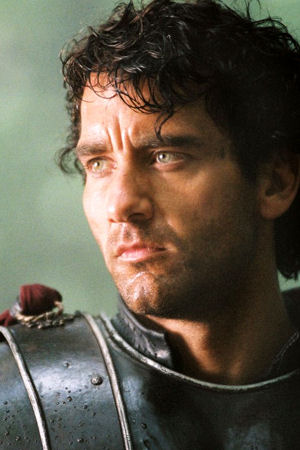
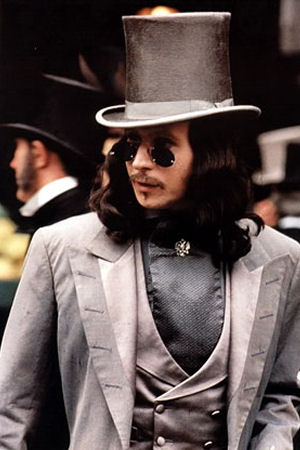

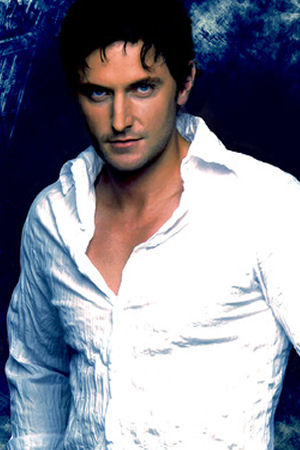
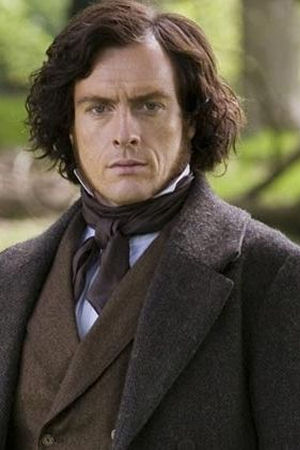


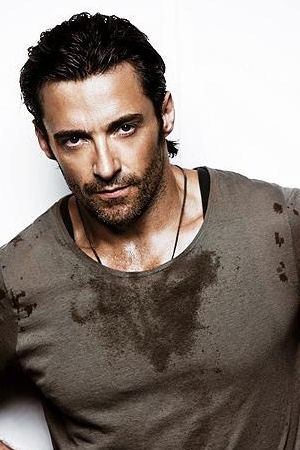
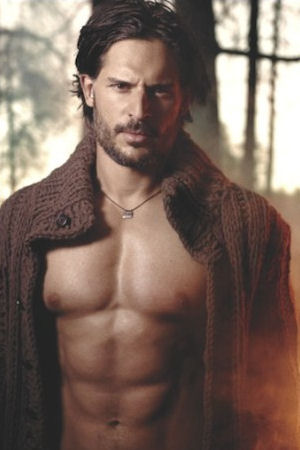
Commenti recenti
7 anni 2 settimane fa
7 anni 2 settimane fa
7 anni 2 settimane fa
7 anni 2 settimane fa
7 anni 2 settimane fa
7 anni 3 settimane fa
7 anni 3 settimane fa
7 anni 3 settimane fa
7 anni 3 settimane fa
7 anni 3 settimane fa